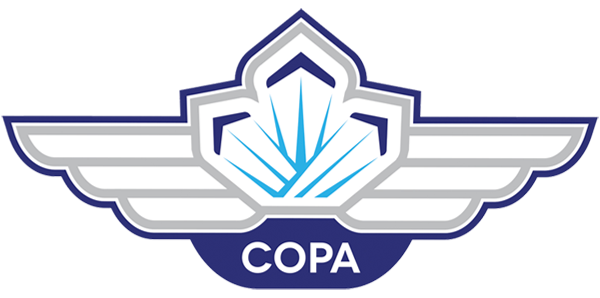Governor General Recognizes Canadian Pilot for Flying with Purpose

By Angela Gillies
Originally published in the May/June issue of Flight Magazine
COPA member Doug Chisholm is a bush pilot who found his purpose honouring Canadians who lost their lives in World War II.
His interest in airplanes began at 11 years old when he took a flight from Toronto to Scotland. In 1970, at just 16 years old, he began taking flying lessons in Hamilton, Ont. and obtained his Private Pilot Licence (PPL) in 1974.
Chisholm moved out west after earning his PPL and began apprenticing as an Aircraft Maintenance Engineer while continuing to fly and build time toward his Commercial Pilot Licence. In 1975 he settled in La Ronge, Saskatchewan — at the time a thriving northern aviation town with lots of floatplane activity..
In 1977, he earned his Commercial Pilot Licence and Aircraft Maintenance Engineer Licence which positioned him to land his first flying job in a C-185 floatplane. It was in 1979, that he was able to purchase his 1954 C-180 which he continues to fly and maintain.
In 1997, after two decades of flying through northern Saskatchewan, Chisholm received a phone call from a friend who asked if he could take a picture on an island that was named in memory of a pilot who died in World War II.
The province of Saskatchewan named nearly 4,000 geographic features in the north after the servicemen from Saskatchewan who died in WWII. This phone call sparked the idea for Chisholm to continue researching these commemorative sites.

At the time, GPS data wasn’t available, and the Saskatchewan hometowns were unknown. The only information available were their names, service numbers, and the provincial map sheet indicating official commemorative site locations. Chisholm started researching their hometowns and getting ahold of various Legion branches in Saskatchewan to further knowledge and make more information available to the public and the families.
Of the 4,000 servicemen and women from Saskatchewan who lost their lives, about 1,900 were RCAF, about 1,900 were Army, and about 200 were Navy. After the war, the province had named a lake, island, or bay in memory of each.Before long, Chisholm’s passion project began getting picked up by the local media, with more people asking him to take photos of the commemorative sites of their loved ones.
“Over the years, I’ve landed my floatplane at 300 geo-memorial sites across the north where I install a bronze plaque on the shoreline in memory of the serviceman that the site was named after. Each site is different, just like the individual,” explained Chisholm.
“When I get to those lakes, I’m flying on behalf of families — I’ve gotten to know some of these families and what the impact of losing someone they loved in the war has had on them,” Chisholm continued. “When I put the plaque up, I record a short video of my visit so I can share it with their family and then it can be passed down for generations to come. I talk about the individual and tell the stories their family shared with me. It’s an emotional journey.”
“For one of the first plaques I did, the soldier was a paratrooper. He landed in France the night before D-Day, on June 5, 1944. He wrote a letter to his family before he got on the airplane and the family shared that letter with me. It was a very powerful moment,” said Chisholm. “I went to Neufeld Bay and put the plaque on the shoreline. Now, when people see it, they can stop and consider the sacrifice that Pte. Leonard Neufeld made for his country.
“Since 1997, I’ve developed a card file system for each of the 4,000 geo-memorial sites and I’ve been able to record and catalogue aerial photos of almost all of these lakes, islands, and bays.,” said Chisholm. The names are all on the detailed provincial maps.
On March 21, 2024, Chisholm was proud to receive the Meritorious Service Medal (Civil Division), presented by Governor General Mary Simon at the Rideau Hall in Ottawa. The Citation acknowledges his work as a heritage researcher and bush pilot, commemorating the Saskatchewanian servicemen who lost their lives in WWII. For other pilots who want to travel to northern Saskatchewan and visit any of the commemorative sites,” Chisholm says, “You have to research it. Thankfully, a lot of information is available online nowadays. I’ve published a couple of books with this information, too. Anyone is welcome to contact me at 306-920-7809 if they would like to learn more.”
Chisholm moved to the Melfort area of Saskatchewan in 2011 and is currently a member of COPA Flight 182. When he first arrived, he was delighted to learn there was a local flying club and seven hangars at the local airport. There are now 15 hangars at Melfort Airport with more active aircraft and some new keen pilots. In September 2021, Chisholm received the COPA Directors Award from COPA’s Saskatchewan Director-at-Large, Candace Pardo. “There was a usual monthly meeting scheduled at the airport,” Chisholm explained. “But when I got there, I learned it wasn’t actually a meeting, rather a celebration. People had come from all around, there was cake and they awarded me with a COPA plaque.”
When asked if he has any words of advice for COPA members, Chisholm said, “As a pilot and aircraft owner, I’m always looking for something interesting to do. For me this was it, I found a project that people would appreciate.” Follow your passion and you’ll find your purpose.
